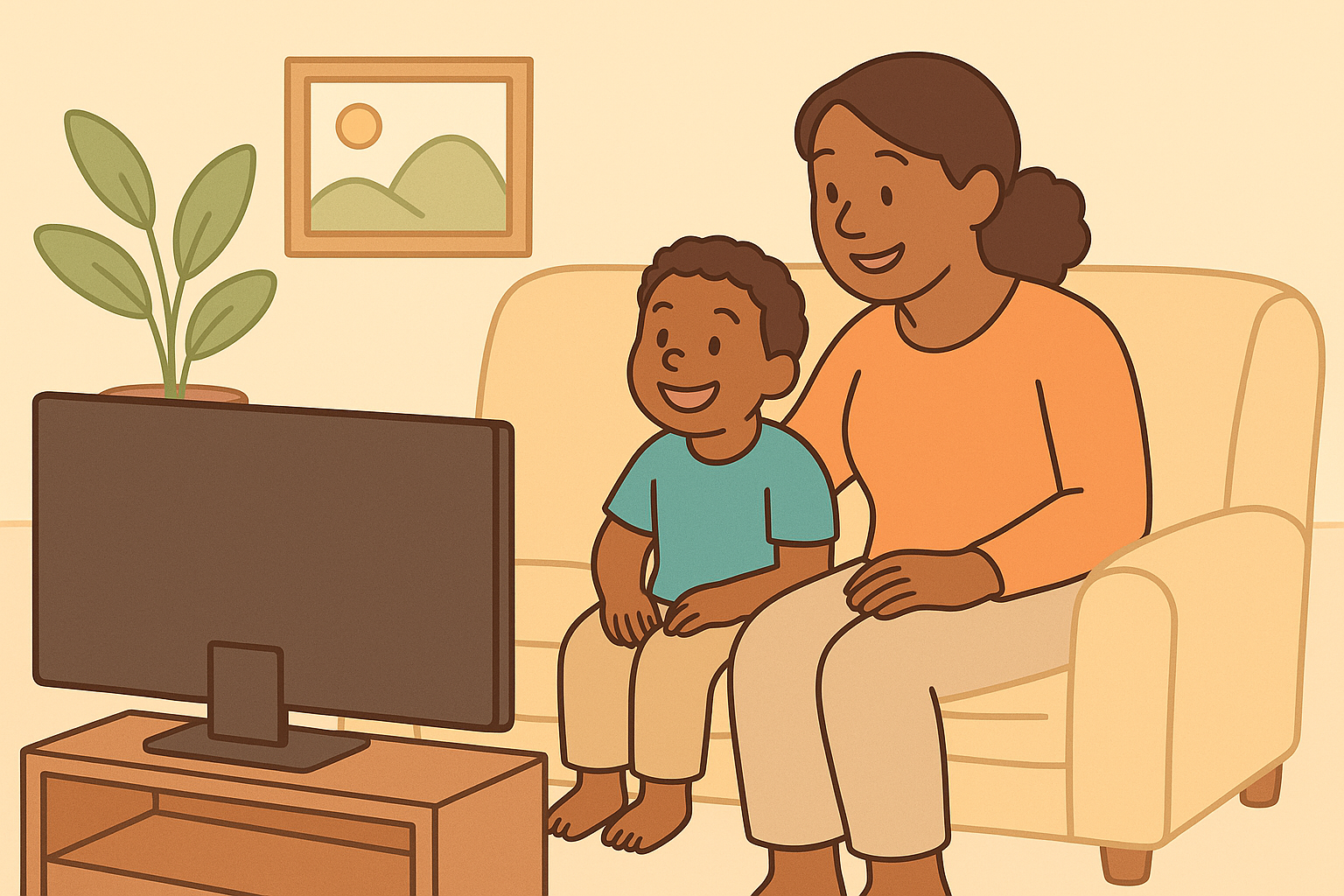The Hidden Power of Co-Viewing: Watching Together Builds Connection
The Hidden Power of Co-Viewing: Watching Together Builds Connection
When parents think of screen time, they often think of what kids shouldn’t be doing — less TV, fewer tablets, fewer YouTube videos. But what if screens could actually bring families closer?
Co-viewing, or watching and engaging with media together, can turn everyday viewing into a powerful bonding and learning experience.
When you sit beside your child — not just monitor them — you help them think critically, feel emotionally supported, and build shared memories that last far beyond the episode.
Why Co-Viewing Works
Watching together builds what psychologists call joint attention — when two people focus on the same thing and share emotional cues.
This is how kids learn language, empathy, and social awareness. It’s the same reason reading aloud or playing side-by-side games is so impactful.
Co-viewing helps your child:
Understand and process what they see
Ask questions about emotions and situations
Learn your family’s values through discussion
Feel closer to you — even during “screen time”
💡 Fuzzigram tip: Connection, not control, turns media into meaning.
See also The Science of Screen Time: How Devices Affect Kids’ Brains.
The Myth of “Bad” Screen Time
Not all screen time is isolating or mindless. What makes the difference is who is watching — and how.
When kids watch alone, the experience is passive. When they watch with someone, it becomes interactive learning.
Even a cartoon can spark deep questions:
“Why did that character feel sad?”
“What would you have done?”
These small moments build emotional intelligence.
How to Practice Co-Viewing
1. Sit Together — Literally
Physical closeness makes the experience relational. Even if you’re not commenting every moment, presence matters.
2. Ask and Listen
Don’t quiz — wonder together. Ask:
“What do you think will happen next?”
“Why do you like this show?”
“How do you think that character feels?”
3. Use Media as a Teaching Tool
If a show touches on friendship, kindness, or courage, pause and connect it to real life.
💡 Fuzzigram tip: You don’t have to turn every show into a lesson. A simple “That was kind of like when…” goes a long way.
You might also like Role Play Games That Build Empathy and Emotional Intelligence.
Choosing the Right Content for Co-Viewing
Not all content is made equal. Look for shows or apps that:
Spark curiosity or imagination
Highlight social or emotional growth
Encourage problem-solving or kindness
Reflect diverse experiences and positive role models
Trusted examples:
Preschoolers: Bluey, Daniel Tiger’s Neighborhood, StoryBots
Early school-age: Wild Kratts, Ada Twist, Scientist, Ask the StoryBots
Older kids: Brainchild, Our Planet, Carmen Sandiego
💡 Fuzzigram tip: If you enjoy it too, you’ll naturally engage more — and your child will sense that.
Avoid the “Background Screen” Trap
Leaving screens on while multitasking doesn’t count as co-viewing. Kids know when they’re being half-watched.
Turn off distractions and make viewing intentional — even if it’s just one 15-minute show together.
Extend the Conversation Beyond the Screen
When the episode ends, bring it back to real life:
“Remember that teamwork scene? Let’s try something like that when we build the puzzle.”
“You liked the garden episode — want to plant something this weekend?”
These connections bridge digital and physical learning.
The Emotional Layer: Why Kids Crave Shared Screens
For many children, watching shows together is a love language. It’s attention without pressure, connection without expectation.
Co-viewing can help shy or anxious kids open up emotionally. Sometimes a comment about a character becomes the safest way to express their own feelings.
💡 Fuzzigram tip: Screens can be a window to your child’s inner world — if you’re sitting beside them.
Setting the Right Tone
Your goal isn’t to analyze every moment — it’s to create shared joy. Laugh, react, and comment naturally. Your child will associate screens with closeness, not conflict.
Co-Viewing for Different Ages
Toddlers (2–4): Short, calm shows — co-watch and describe what’s happening.
School-age (5–10): Ask open-ended questions.
Tweens (11–13): Discuss characters’ choices and values.
Teens: Watch their favorite shows sometimes — even if you don’t love them. It builds trust.
Co-viewing doesn’t mean hovering — it means joining.
When you share the screen, you’re also sharing emotion, laughter, and learning.
And that’s the magic: screens don’t have to replace connection. Used together, they can deepen it.
This content is for educational purposes and is not a substitute for professional medical or psychological advice.
Popular Parenting Articles


